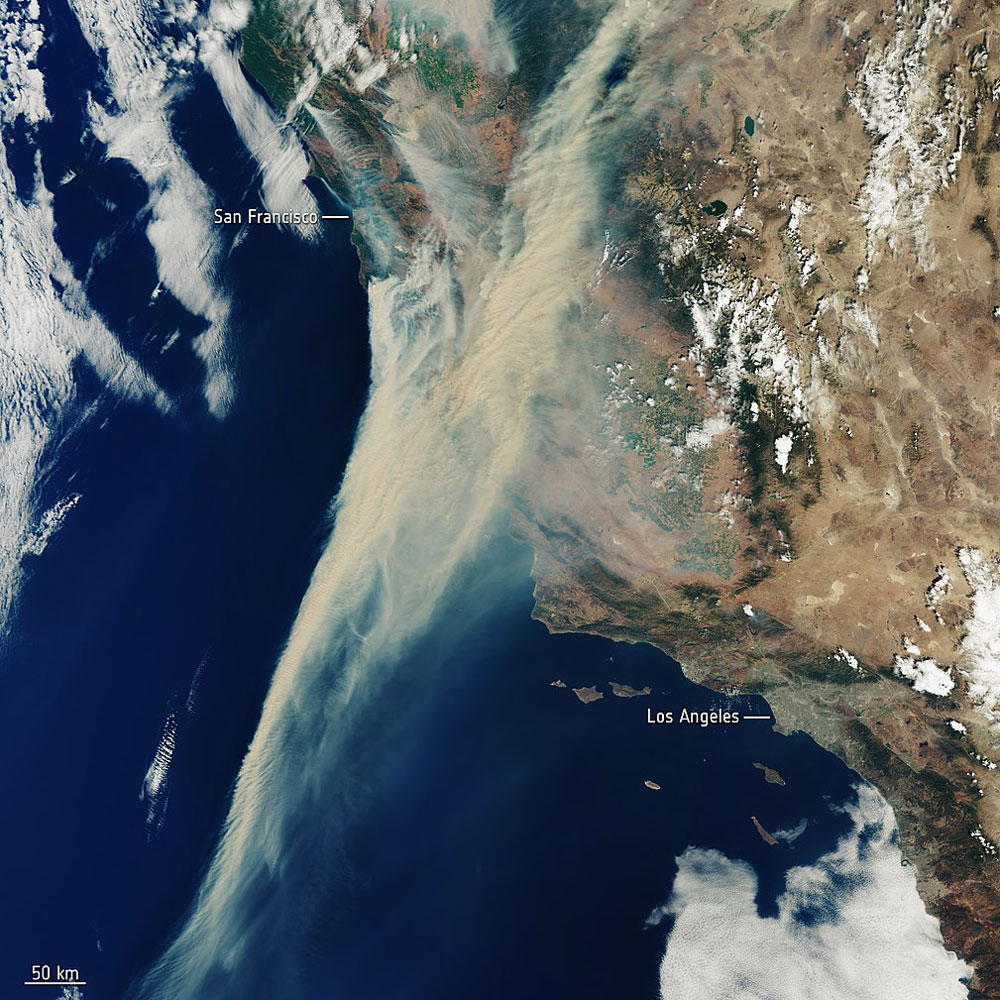
September 7, 2020; Time, Los Angeles Times, and Washington Post
“More than two million acres of land have been burned by wildfires in California as of Monday, according to the state fire agency Cal Fire, surpassing the all-time record of 1.9 million set in 2018,” reports Jasmine Aguilera for Time. And all indications are that the fires will continue for some time yet.
“This is crazy. We haven’t even got into the October and November fire season and we’ve broken the all-time record,” Cal Fire Captain Richard Cordova told Cable News Network (CNN) on Sunday.
High temperatures have certainly exacerbated matters, as Andrew Freedman reports in the Washington Post. Among new all-time-high records set are the following:
- In Woodland Hills, just 20 miles northwest of downtown Los Angeles, temperatures soared to 121°F, the highest ever observed in Los Angeles County.
- Chino, which is 32 miles east of Los Angeles, also hit 121°F.
- San Luis Obispo, which is just 10 miles from the coast, reached 120°F. (The average high in San Luis Obispo for August and September is 77°F).
- Downtown San Francisco touched 100°F, a full 30°F above average for September and breaking a record that stood for more than a century.
- Burbank, north of downtown Los Angeles, tied its all-time-high temperature record of 114°F on both Saturday and Sunday.
- Palm Springs, located about 100 miles east of Los Angeles, hit 122°F Saturday, breaking its previous September record from 1950.
- Death Valley set a September record with a high of 125°F, beating the old record of 123, set in 1996. In August, it reached 130°F, the highest temperature observed globally since at least 1931.
Since August 15, the state has seen eight deaths and nearly 3,300 destroyed structures due to fire. The Los Angeles Times reports that up to 115,000 southern California residents lost power at one point, although all but 32,000 had power restored by Monday. The county has also been offering “cooling centers” for those without air conditioning.
Sign up for our free newsletters
Subscribe to NPQ's newsletters to have our top stories delivered directly to your inbox.
By signing up, you agree to our privacy policy and terms of use, and to receive messages from NPQ and our partners.
In northern California, ABC News reports that the utility Pacific Gas & Electric has informed 158,000 customers in 21 counties to expect possible power shutoffs.
Some relief, at least for a time, may be on the way: Temperatures are forecast to cool some on Tuesday but to remain above normal in most of the state for much of the week. Of course, as noted above, peak fire season typically is later in the fall.
Michael Wehner, who researches extreme weather events at Lawrence Berkeley National Laboratory, notes that while not every year leads to mass wildfires, the global climate emergency has resulted in more severe fire waves more often, as 30-plus years of Cal Fire data make clear.
Wehner observes that “climate change has caused extreme heat waves to be three to four degrees Fahrenheit warmer in California.” These trends “will continue as the planet continues to warm,” he writes in an email to Freedman, noting the amount of warming will depend on future trends in global carbon emissions.—Steve Dubb











